Arborvitae are hardy, fast-growing evergreen trees. Commonly used as windscreen or hedges, arborvitae also make attractive accents for many landscaping applications. However, before you plant an arborvitae you are wondering how big these plants get? Well, you have come to the right place. In this post, we provide information on the height and spread of most common arborvitae species.
Depending on the cultivar, landscaping arborvitae range from a max of 2 feet to a maximum of 70 feet in height. This wide height range comes with a spread range of 1.5 feet to 20 feet. Arborvitae species that make up this spread include:
- American or Eastern
- Giant
- Korean
- Japanese
- Sichuan
- Golden Globe
- Danica
Read the rest of this post for details on how large the above-listed arborvitae grow. We also include details on each species's preferred growing conditions. In addition, we provide advice on how to prune arborvitae as well as the answers to a few related questions.
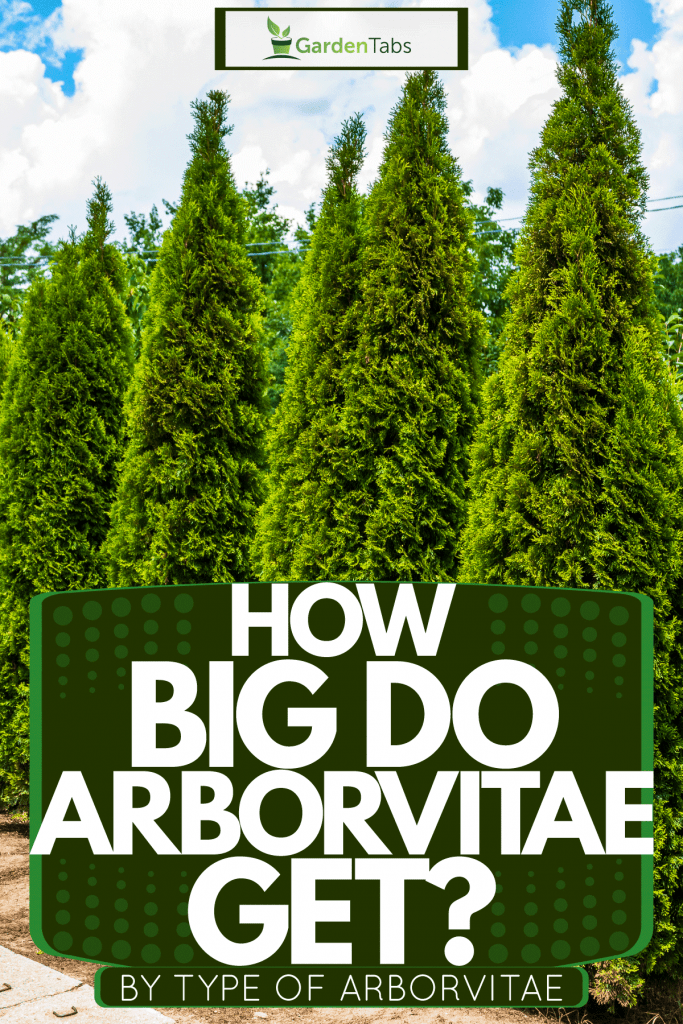
Arborvitae Size by Species
As mentioned above, arborvitae species vary greatly in size. Even the specific dimensions in the following subsections are subject to the individual plant's growing conditions and regiment of care. To learn more about how each of these cultivars of arborvitae will grow in your specific region, consult a local horticulture expert. If you want to find your USDA hardiness zone, use this link.
To help care for your arborvitae, read this great article on arborvitae fertilizer: 7 Best Arborvitae Fertilizers.
American or Eastern (Thuja occidentalis)
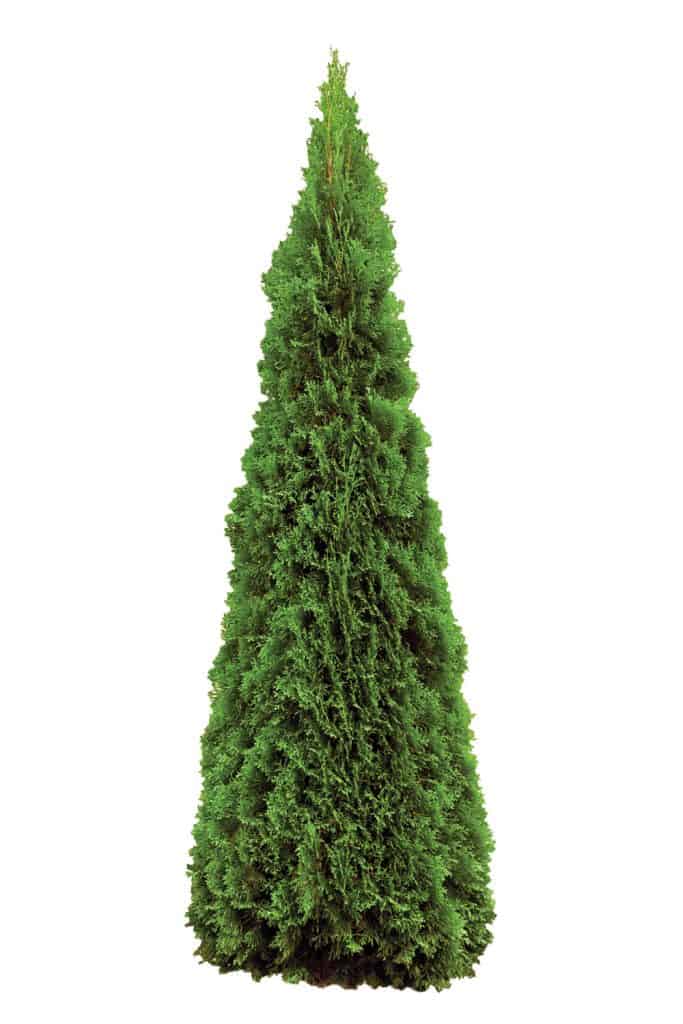
The American or eastern arborvitae reaches a height of 50 feet to 70 feet and a spread of 10 feet to 15 feet. This plant thrives in hardiness zones 3-7, prefers full sun, and tolerates a wide range of soil types. The growth shape is of a wide pyramid, which, combined with their size, makes the American arborvitae a popular option for wind and sight screens.
Giant (Thuja standishii x plicata)
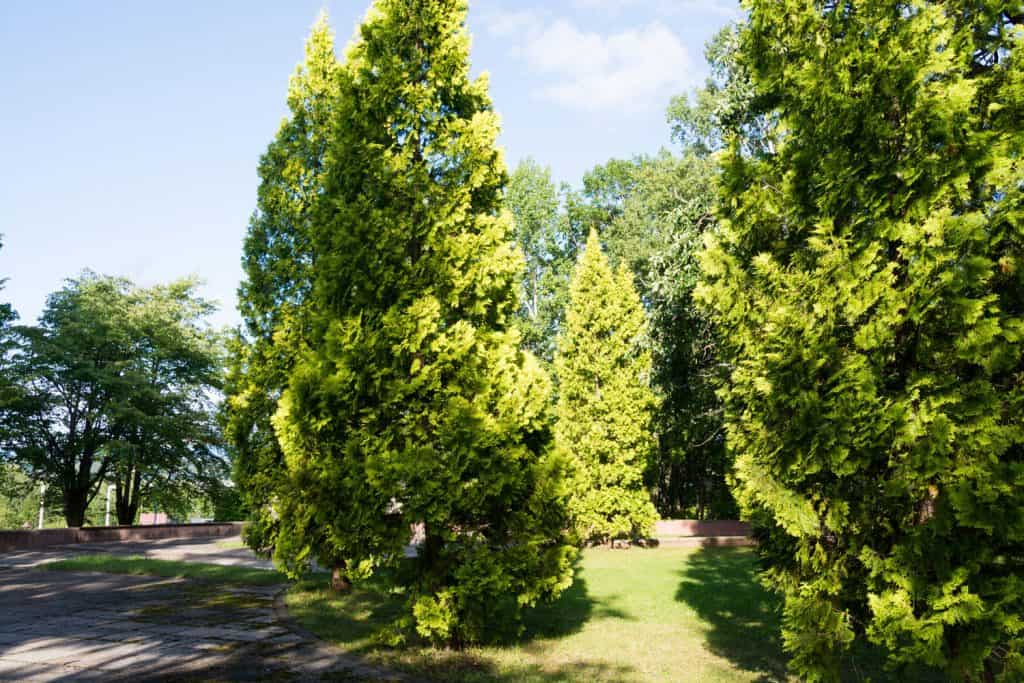
The giant arborvitae reaches a height of 50 feet to 60 feet and a spread of 12 feet to 20 feet, making this the widest of the arborvitae species. Unlike the American arborvitae, the giant arborvitae thrives in both full sun and partial sun conditions. While tolerant to a wide range of soils, very sandy, very wet, and overly salty soils should be avoided.
Korean (Thuja koraiensis)

The Korean arborvitae grows to a maximum height of 15 feet to 30 feet with a mature spread of 10 feet to 15 feet. This evergreen grows best in hardiness zones 5 to hardiness zone 8. This shrub is easy to care for and grows well in either full sun or partial shade. It prefers a moderate amount of watering so only needs special water during times of drought and heat.
Japanese (Thuja standishii)
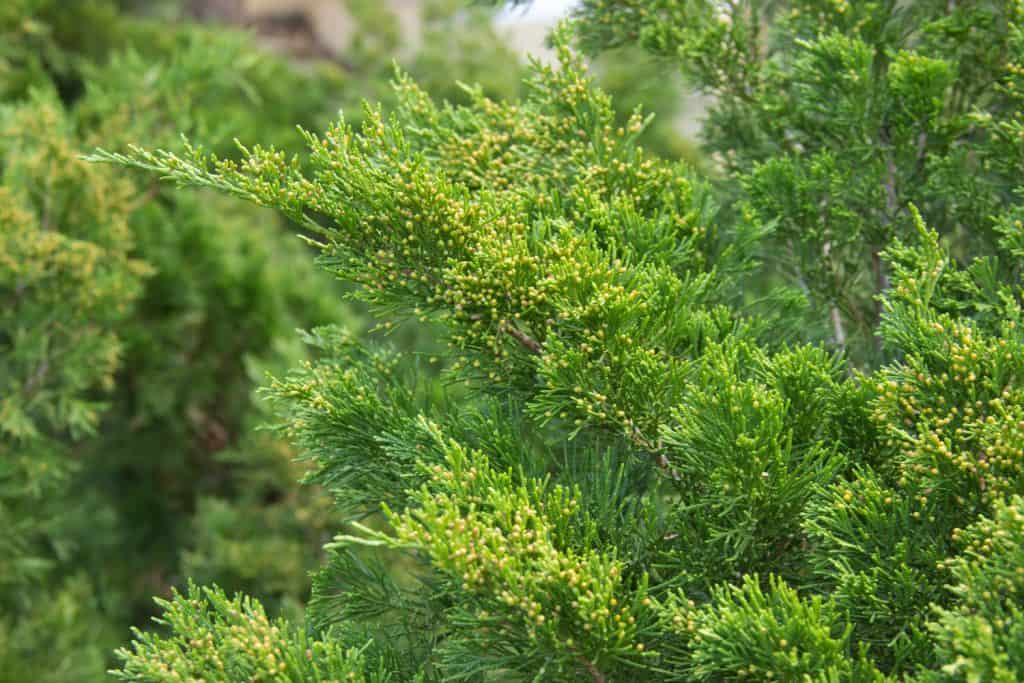
Japanese arborvitae reaches a mature height of 20 feet to 30 feet, making them slightly larger than the Korean arborvitae. They have a spread of 10 feet to 15 feet. Like most arborvitae, this tree prefers full sun to partial shade but does best in hardiness zones 5 through 8. The leaves of this particular species are quite aromatic with what is described as a lemony scent.
Sichuan (Thuja sutchuenensis)
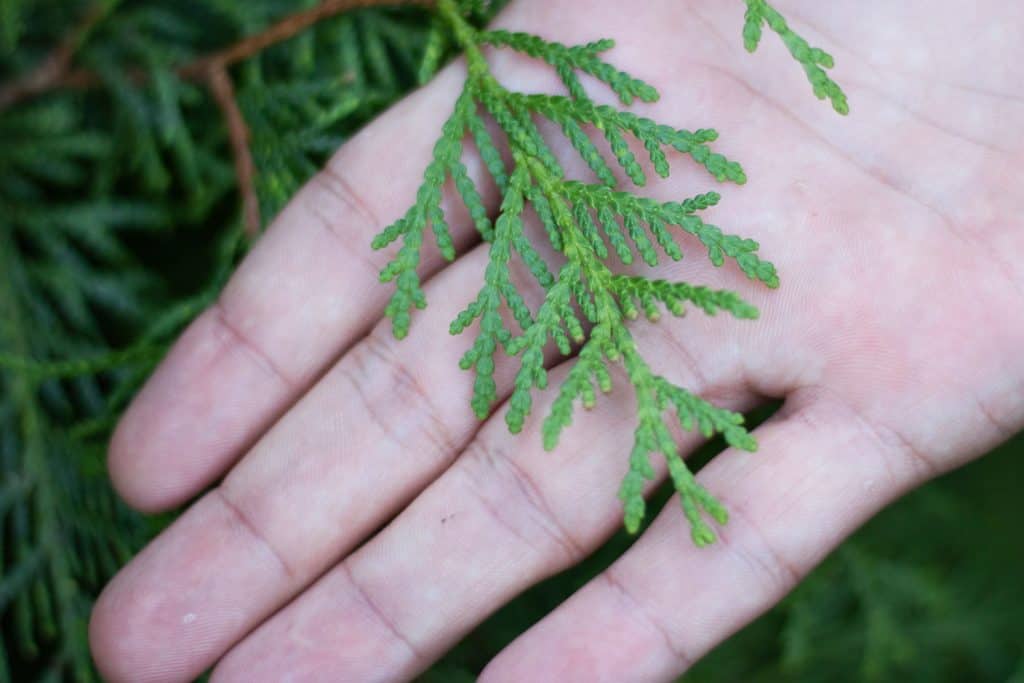
This arborvitae species grows to a height of 30 feet to 65 feet when mature and with a likely spread of 10 feet to 15 feet. This cultivar prefers a narrower range of environments so does best in hardiness zone 6 and 7. Like other arborvitaes, this species prefers full to partial sun and a moderate amount of water. This species was presumed extinct until rediscovered in 1999.
Golden Globe (Thuja occidentalis variety)
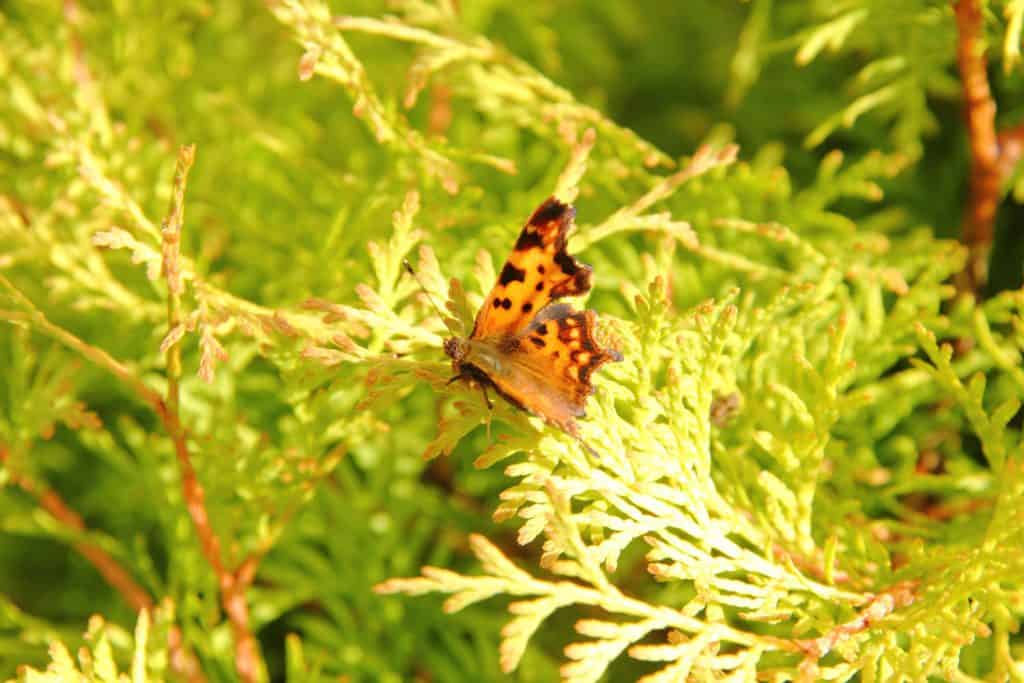
Golden globe arborvitae is a smaller version of this evergreen shrub. At maturity, it reaches a size of about 4 feet tall by 4 feet wide. It can be grown in hardiness zones 2 through 8, prefers medium amounts of water, and full to partial sun. It is unique due to its golden-hued foliage.
Danica (Thuja occidentalis variety)
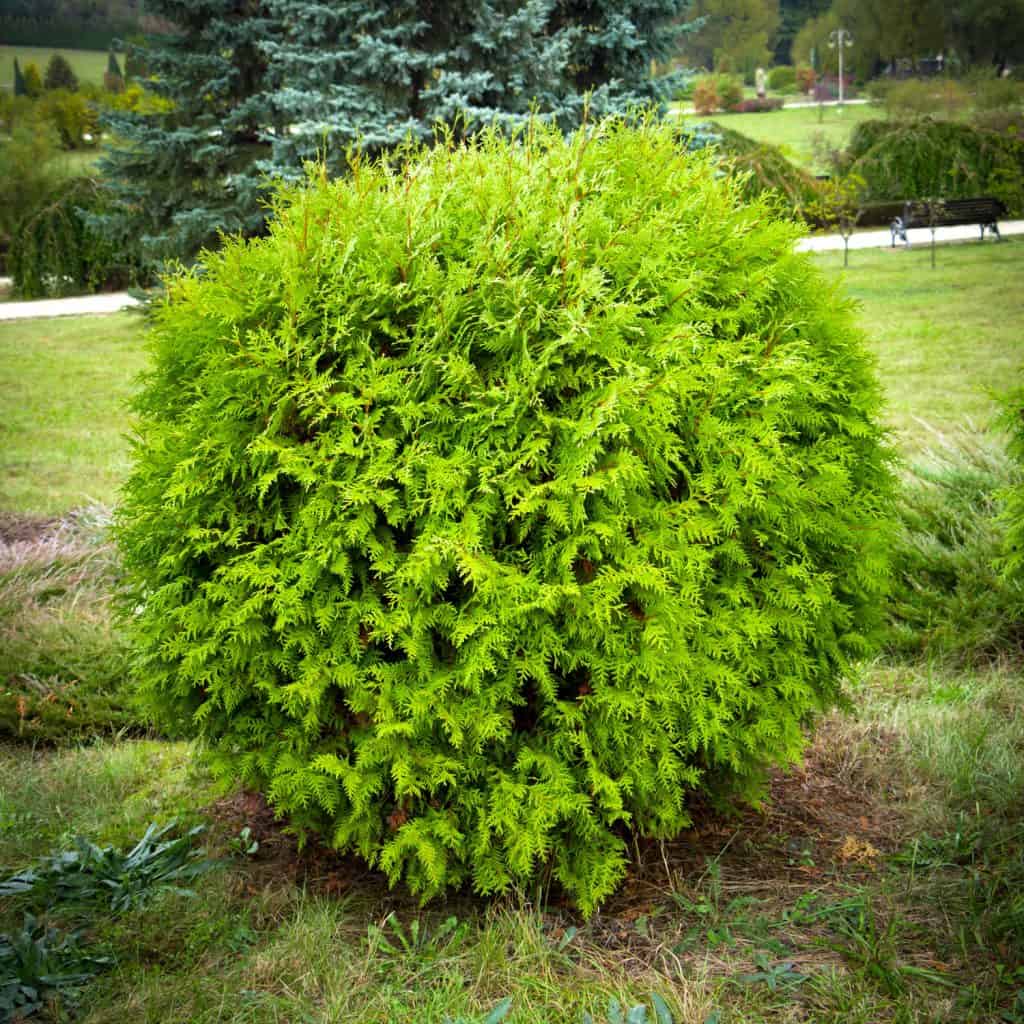
This true dwarf arborvitae only grows to a size of about 2 feet by 1.5-feet when mature. It makes for excellent green all-year addition to landscaping and as pathway edging. This variety of arborvitae prefers full sun and moderate moisture.
How long does it take for arborvitae to establish?
Some of the arborvitae described above are slower growing than others. However, it generally takes a full season for these plants to get fully established. This of course varies based on local growing conditions and level of care.
While your arborvitae is establishing itself, you probably will not notice significant upward growth. Instead, the tree/shrub is rooting in order to thrive for years to come. It is wise to make sure your plant is well-watered during the sensitive establishment period.
How much space do arborvitae need?
As described in the above sections, different varieties and species of arborvitae have significantly different size ranges. This means that they also require different amounts of space. As a rule of thumb, give your plants all the space they need to reach full size. However, you can plant arborvitae closer than their maximum widths in order to create a more solid hedge.
If you plan on planting arborvitae closer than their maximum spread, make sure that each tree is given at least 80 percent of its full potential. This allows the tree to still grow to a healthy size without being crowded. This situation is best paired with active trimming and care.
Can you keep arborvitae small?
Yes, you can. One of the advantages of arborvitae is how easily prune-able they are. If there is a certain size or height you want your arborvitae, simply prune it to that size as the plant gets older. However, read the following subsections to ensure that you prune them properly. Otherwise, you might end up killing or permanently damaging your arborvitae.
When should arborvitae be pruned?
When you prune your arborvitae depends on the end goal. The preferred season is different for slight pruning to maintain the general shape, shaping a hedge, and pruning to shorten or significantly change your arborvitae's size. It is possible to trim dead material at any time.
Click here for pruning shears from Amazon.
If you want to maintain an ornamental look, prune from spring to mid-summer. This allows your plant time to regrow shoots before the winter truly sets in. When pruning for ornamental looks, slightly overcut errant branches so your arborvitae will grow into the desired final shape.
Click here for a hedge pruner from Amazon.
When trimming the top or sides of an arborvitae hedge, the best time to trim is late spring to before mid-summer, after the tree has flowered. This allows your tree time to recover but still maintain its shape. Many gardeners will also shape their hedges again in late summer with a more precise trim. To learn more about how arborvitae are used as hedges, read this article: 17 Best Privacy Bushes And Shrubs.
Can you cut the top off arborvitae?
Yes, you can. If you are topping or significantly changing your arborvitae's size, the best time to do this is during the winter. This is because the plant stores a lot of the nutrients in the roots during winter, which it will still have access to after you make significant height changes. If you wait until spring or summer, the topping process will put undue stress on the plant.
Take care, once you top an arborvitae, the top becomes square and will not regain the original conical shape. This is because the arborvitae will not send out additional top leaders.
How much can you trim arborvitae?
Generally, you should avoid cutting more than 1-foot of your arborvitae in a single pruning. Cutting more can seriously damage your plant and lead to bald spots. However, you can exceed this recommendation for significant wintertime prunings.
Will arborvitae grow back after trimming?
As long as you follow the above advice, and if your arborvitae is healthy to start with, it will grow back after trimming. However, if you are worried about your arborvitae growing back, make sure to prune less aggressively. The safest option is to only prune still green wood. You can check for green wood by scratching the branch with your fingernail.
In Closing
In this post, we have answered the question of how big arborvitae get. The response is broken down by common arborvitae cultivars. In addition, we provide tips on pruning arborvitae and the answers to a few related questions. Good luck!


